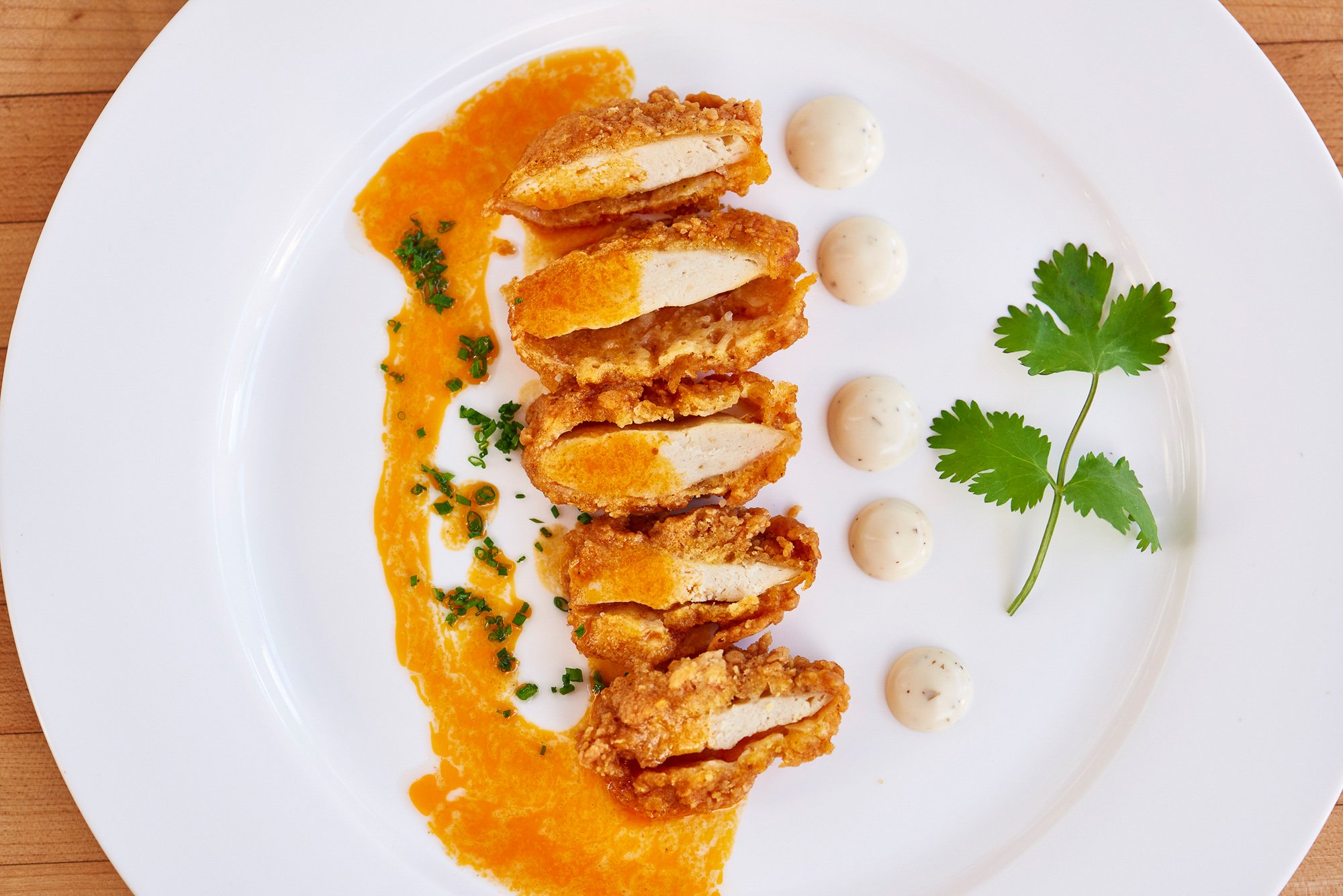
Cultivated meat LCA and TEA: Policy recommendations
The world’s first industry-based life cycle assessment and techno-economic assessment show that cultivated meat can be environmentally beneficial and economically viable.
Explore LCA and TEA insights
Overview
A life cycle assessment (LCA) and techno-economic assessment (TEA) modeling a large-scale cultivated meat production facility in the year 2030 show that cultivated meat could have a lower carbon footprint and reduced overall environmental impacts, and be cost-competitive with, conventional meat. As cultivated meat production becomes more efficient beyond 2030 as the industry scales, further cost decreases, and environmental impact reductions are expected.
Unlike previous LCAs, which relied on academic projections of cultivated meat facilities at scale, these studies were informed by data collected from more than 15 industry partners, including five cultivated meat companies and Singapore’s Agency for Science, Technology and Research.
The LCA factors in ambitious projections of what conventional animal agriculture could achieve in environmental impact improvements by 2030, including renewable energy at farm and feed facilities, reduced ammonia emissions from increased outdoor grazing, reduced methane emissions obtained through feed additives, and zero land-use change associated with soy used in feed. The results from this comparison indicate that the environmental benefits of cultivated meat are expected to be highly robust.
A detailed summary of the LCA and TEA is available here.
Key findings
- Lower carbon footprint: Cultivated meat has a lower carbon footprint than beef and some forms of other conventional meat production when conventional energy is used. The vast majority of cultivated meat’s climate impact comes from electricity use at the production facility, so just as electric cars are only as clean as the source of their electricity, cultivated meat is most sustainably produced with renewable energy. If renewable energy is sourced at production facilities, cultivated meat would have a lower carbon footprint than at least 95% of conventional meat and farmed seafood production, according to the largest global assessment of the environmental impact of foods.1 When compared to an extremely optimistic benchmark projecting reduced environmental impacts of conventional animal agriculture by 2030, cultivated meat produced using renewable energy can reduce the carbon footprint of beef by up to 92 percent, pork by 44 percent, and be competitive with chicken (+3 percent).
- Reduced air pollution: Even when compared to an extremely optimistic benchmark projecting reduced environmental impacts of conventional animal agriculture by 2030, cultivated meat produced using renewable energy can reduce air pollution up to 94 percent compared to conventional beef, 42 percent compared to pork, and 20 percent compared to chicken.
- More land available for climate mitigation & biodiversity: Cultivated meat reduces land use up to 90 percent compared to beef, 67 percent compared to pork, and 64 percent compared to chicken. With this massive decrease in land use, additional opportunities arise for carbon sequestration, production of renewable energy, and protection for biodiversity. Therefore, cultivated meat’s climate benefits are likely to be far greater than the direct climate impacts measured by the LCA.
Environmental impact comparison between cultivated meat produced with renewable energy and ambitious benchmarks for conventional meat
| Conventional chicken | Conventional pork | Conventional beef | |
|---|---|---|---|
| Carbon footprint | 3% increase | 44% reduction | Up to 92% reduction2 |
| Land use | 63% reduction | 72% reduction | Up to 95% reduction2 |
- Improved input efficiency: Cultivated meat is more efficient than conventional meat at converting feed into meat — 5.8 times more than beef, 4.6 times more than pork, and 2.8 times more than chicken (the most efficient meat).
- Cost-competitive: At a production cost of $2.92 per pound,2 cultivated meat can be cost-competitive with some conventional meats by 2030 and serve as an affordable ingredient for plant-based and cultivated meat blends.
- New high-paying job opportunities in both rural and urban areas: The TEA finds that a single cultivated meat production facility is expected to provide 130 to 200 high-paying jobs in rural and urban areas with other opportunities opening up elsewhere in the supply chain.
- Global health (not considered in LCA): The United Nations Environment Program states that the next pandemic will most likely be caused by animal farming, and scientists globally have argued that antibiotic resistance is a growing threat made worse by the use of antibiotics on farms. Cultivated meat reduces both of these risks to zero.
“Cultivated meat has all the same fat, muscles, and tendons as any animal… All this can be done with little or no greenhouse gas emissions, aside from the electricity you need to power the [plants] where the process is done.”
—Bill Gates, How to Avoid a Climate Disaster
Policy recommendations
- Fund open-access cultivated meat research: Public funding into cultivated meat research is far short of what is needed. Governments should fund research to address critical knowledge gaps and optimize processes to scale up and lower costs.
- Incorporate cultivated meat into climate change policies: Governments committed to achieving net-zero emissions through decarbonization of their energy sector can achieve greater emissions reductions if they incorporate cultivated meat and other alternative proteins into their explicit policy priorities.
- Provide incentives and financing for cultivated meat infrastructure projects: These efforts will create jobs and ensure equitable access to cultivated meat.

Blog
New studies show cultivated meat can have massive environmental benefits and be cost-competitive by 2030
Cultivated meat can compete on costs and have a lower environmental footprint compared to conventional meat production.
This LCA and TEA were conducted by the Dutch firm CE Delft. GFI and the European organization GAIA commissioned the LCA, and GFI commissioned the TEA.
1 Compared to the 5th percentile of global conventional meat production (Poore & Nemecek, 2018).
2 This varies due to comparisons with beef from dairy cattle versus cattle raised exclusively for beef.
Header photo courtesy of UPSIDE Foods
